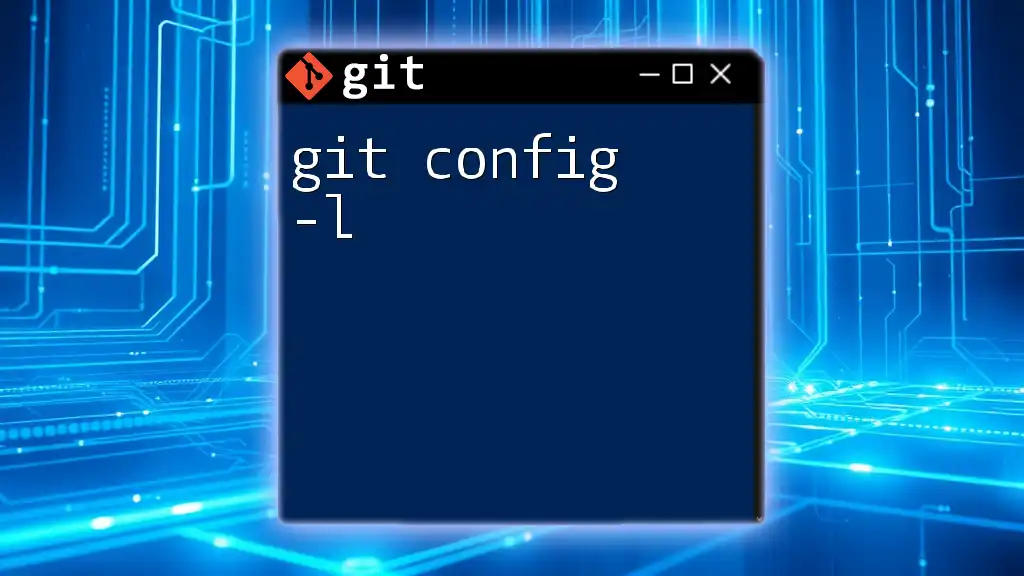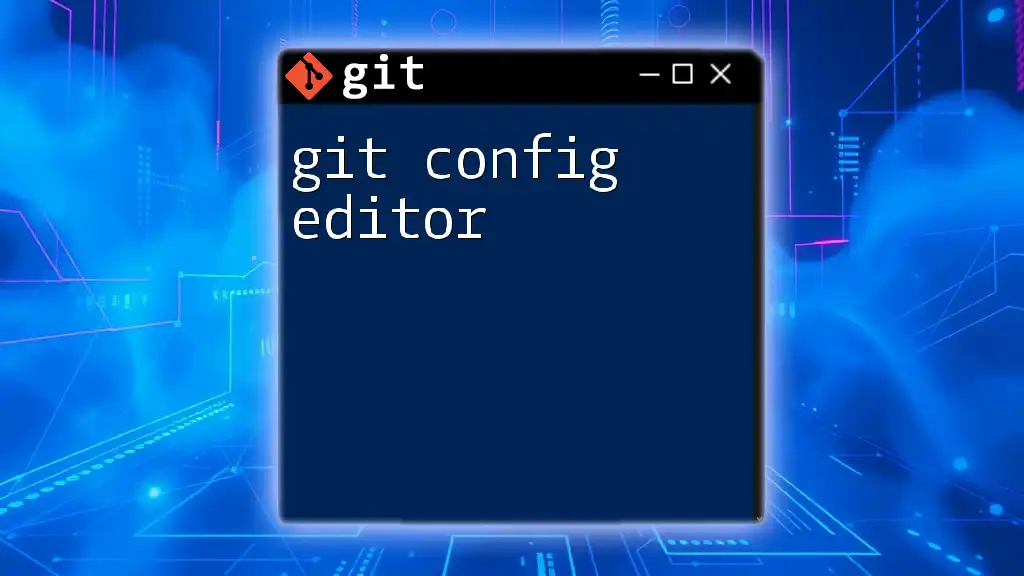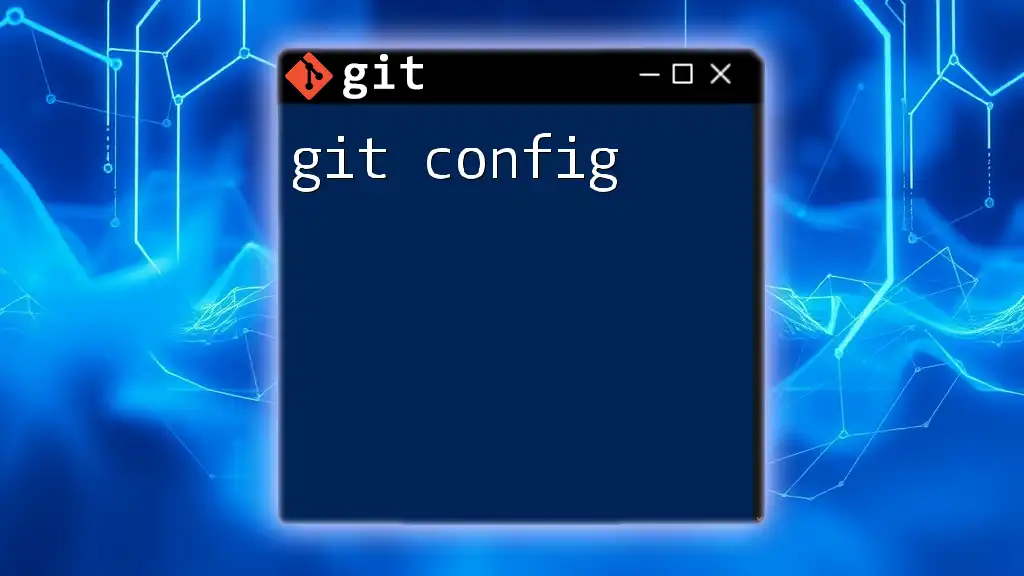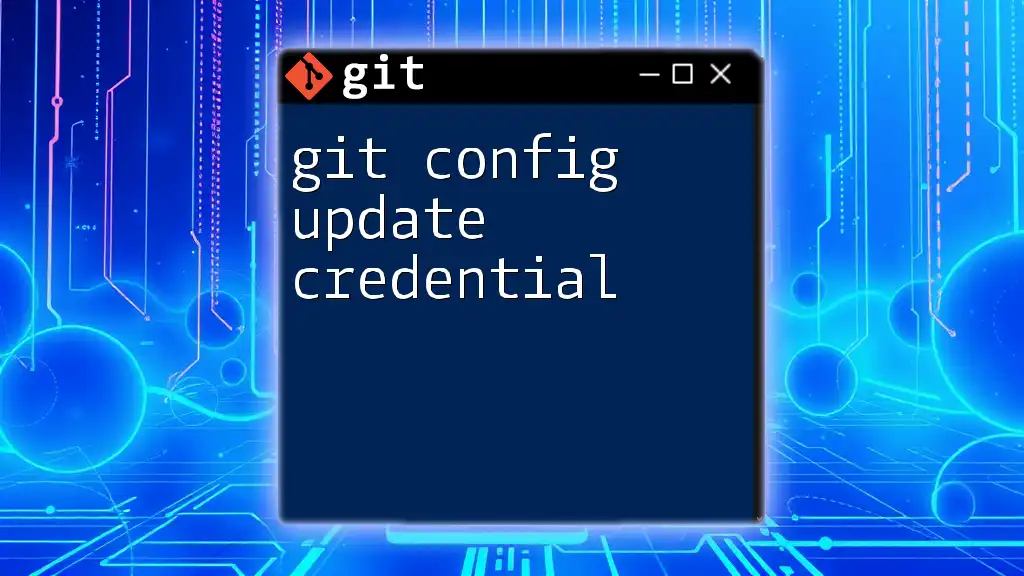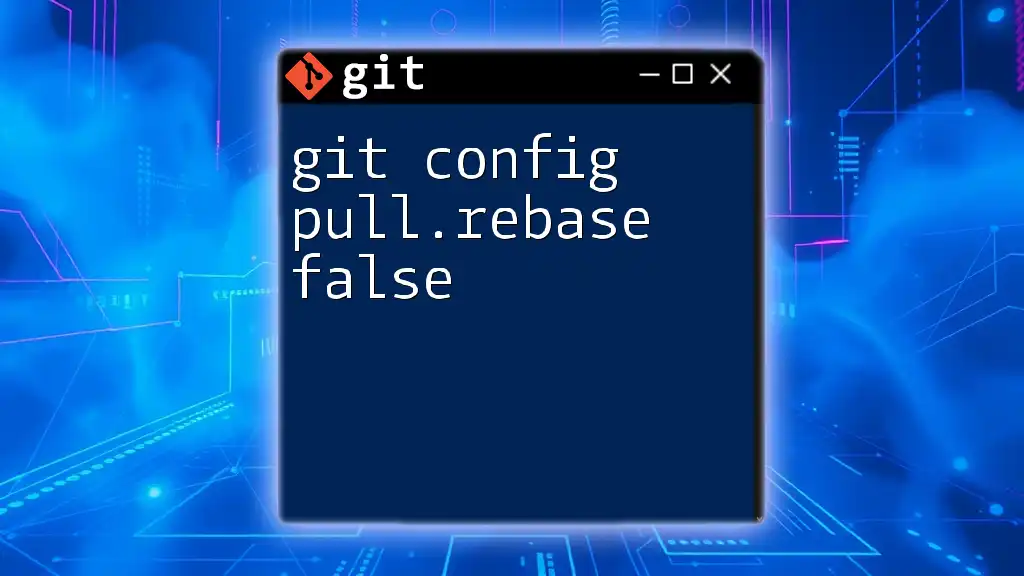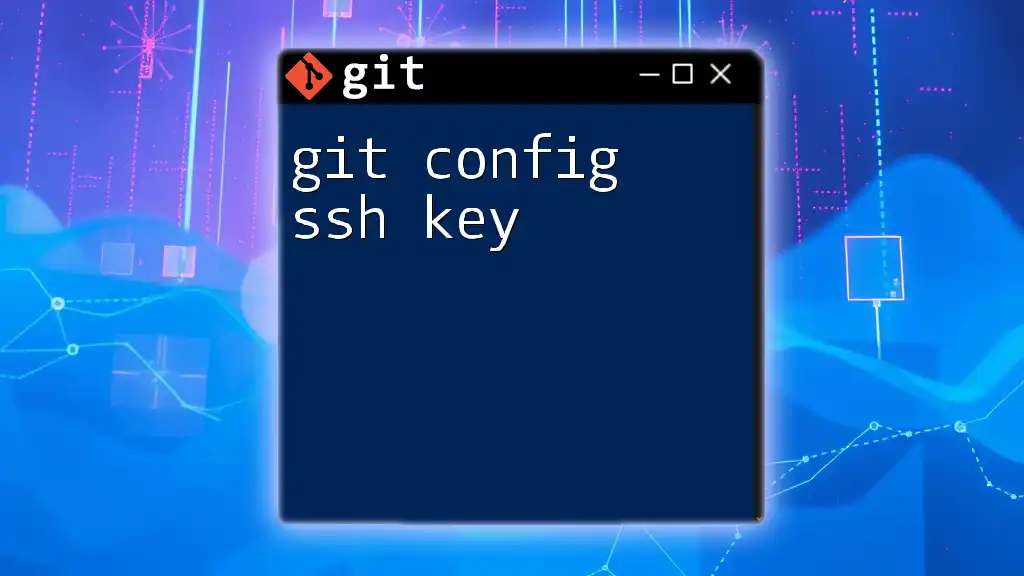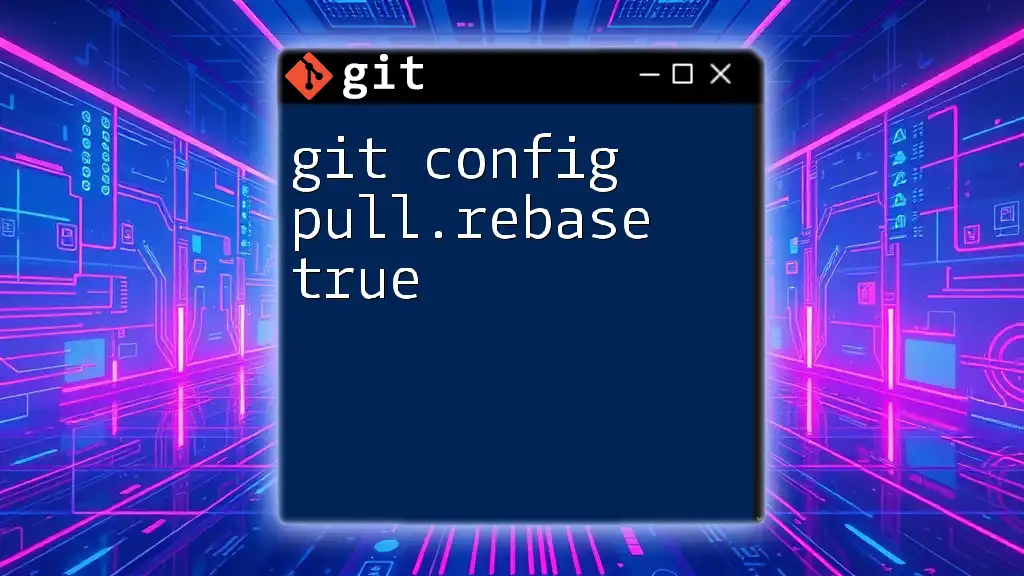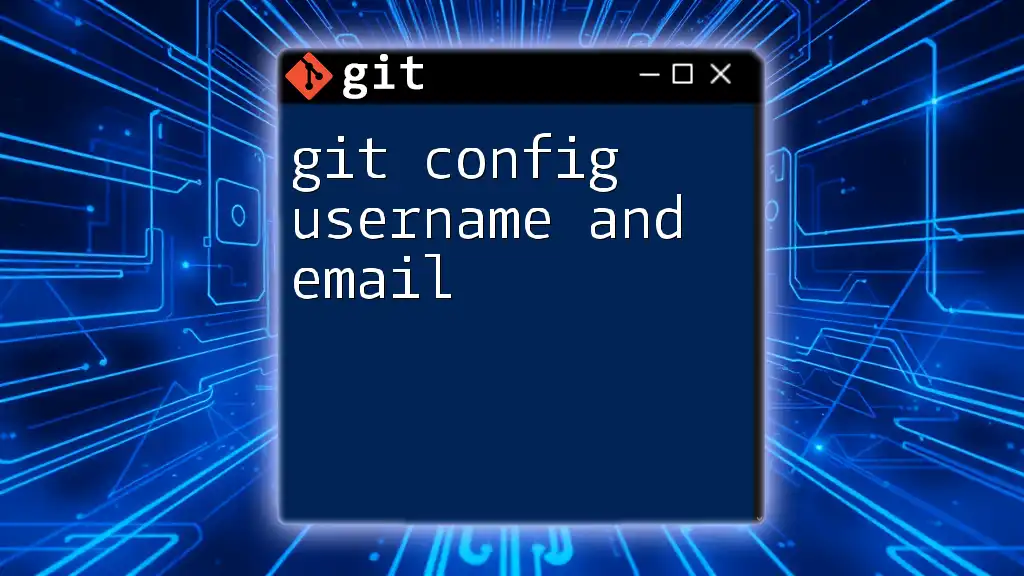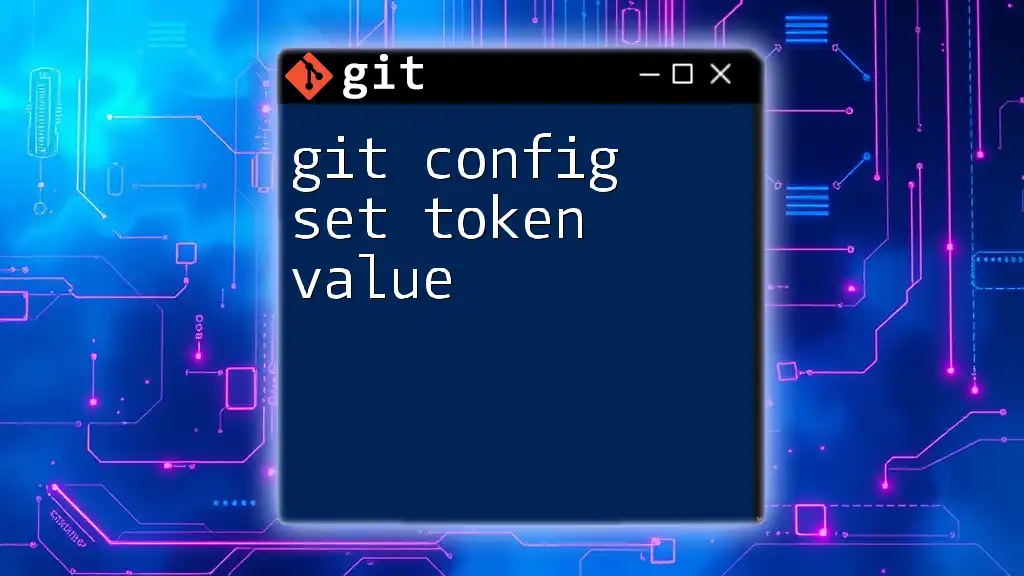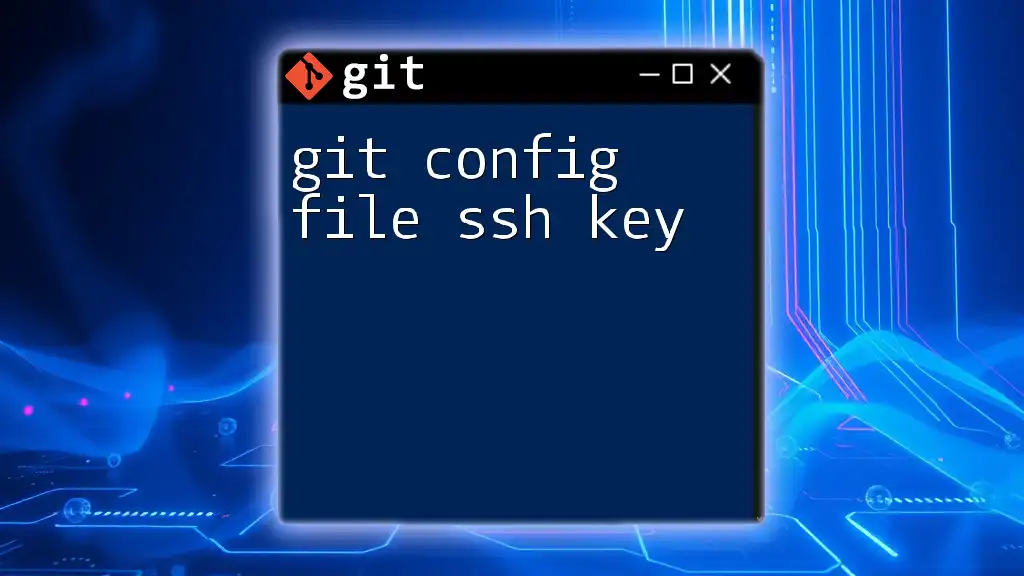The `git config -l` command lists all the Git configuration settings currently in effect for your repository and system, including user information, repository settings, and other preferences.
git config -l
Understanding Git Configuration
What is Git Configuration?
Git configuration is a core component of the Git version control system that allows users to customize their development environment and workflow. Proper configuration is essential, as it influences how Git behaves in terms of user information, editing preferences, and visual presentation. By configuring Git effectively, you'll ensure a smoother version control experience tailored to your needs.
Types of Git Configuration Levels
Git configurations can be set at three different levels, each providing distinct scopes of application:
-
System Level Configuration: This level applies to all users on the system and is usually found in `/etc/gitconfig`. Use this level for settings that should be universal across every user.
-
Global Level Configuration: Found in the user's home directory at `~/.gitconfig`, settings here apply to all the repositories within the user’s account. This is the recommended level for user-specific configurations like name and email.
-
Local Level Configuration: Unique to a specific repository, local configurations are stored in the repository’s `.git/config` file. Settings here override global configurations, making it useful for repository-specific requirements.
Understanding how these levels interact helps avoid conflicts and ensures proper Git behavior in both personal and collaborative projects.
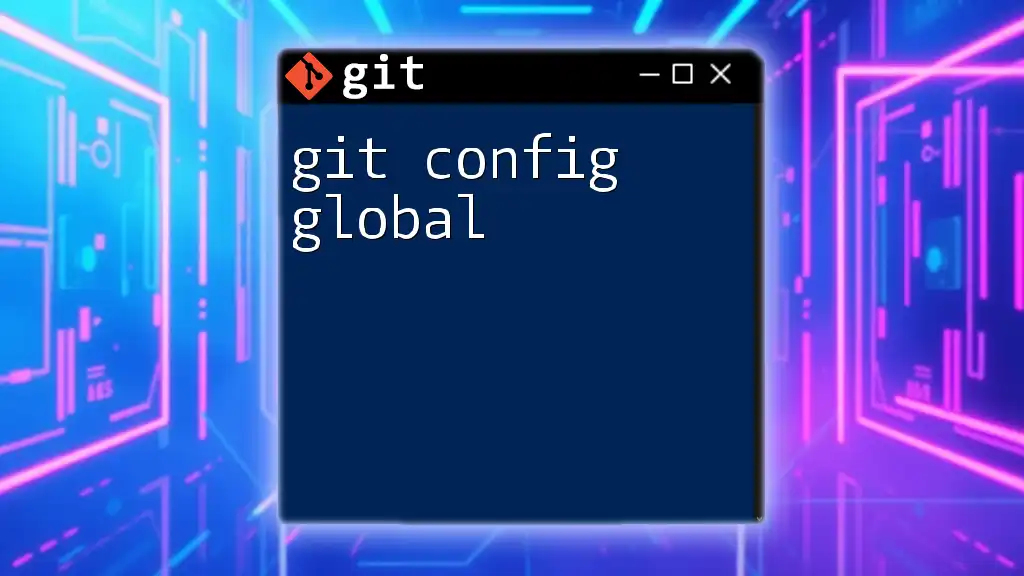
The `git config -l` Command
What does `git config -l` do?
The `git config -l` command serves as a quick way to list all the Git configuration settings currently available in the active repository. This command retrieves configurations from all levels—system, global, and local—and presents them in an easily readable format, enabling users to verify their setup at a glance.
When to Use `git config -l`
Using `git config -l` is handy in various scenarios, such as:
- Before initiating a new repository: Check your existing configurations to ensure they meet your project requirements.
- Debugging issues: If you encounter problems like commits not displaying the correct author information, use this command to troubleshoot your configuration.
- Reviewing settings before collaboration: Verify global and local settings when working in a team to ensure consistency.

The Output of `git config -l`
Understanding the Output Structure
When you execute `git config -l`, Git lists configurations in key-value pairs format. Each entry consists of a variable name (the key) and its assigned value, providing a clear overview of your Git environment's setup.
Example Output and Explanation
Here’s an example of what output from the command might look like:
$ git config -l
user.name=Your Name
user.email=your.email@example.com
color.ui=true
- `user.name`: This entry shows the name associated with your commits. It identifies you as the author.
- `user.email`: This option stores the email address linked to your commits. Ensuring it's accurate is crucial for proper attribution.
- `color.ui`: A setting that improves output readability in the terminal by enabling color coding of Git commands and statuses.
Understanding this output is vital as it directly impacts how Git reflects user actions and interactions.
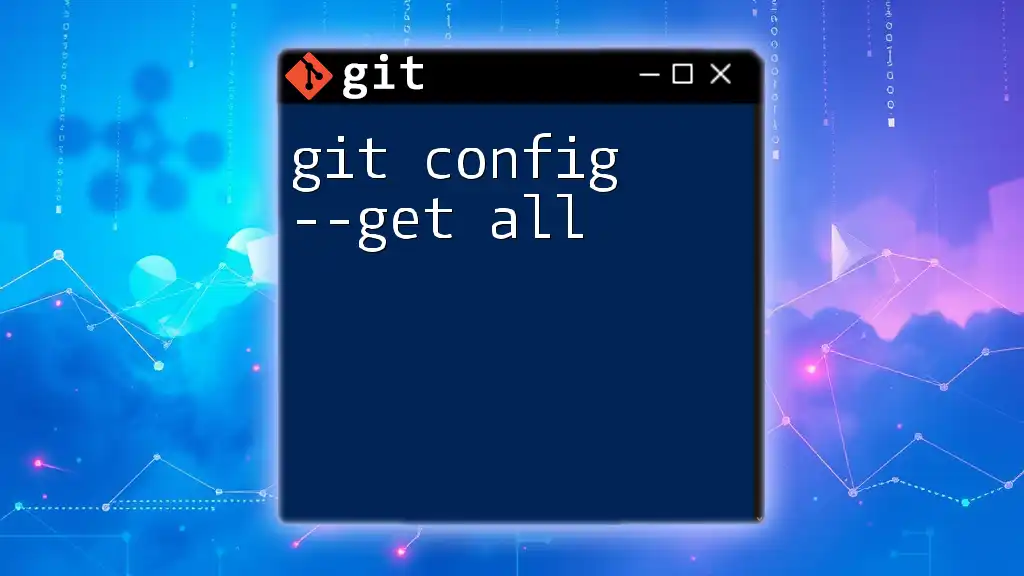
Modifying Git Configuration
How to Change Configurations
If you find that your settings are outdated or incorrect, you can easily modify them using `git config`. It's essential to note the difference between global and local configurations:
- Use `git config --global` when making changes applicable across all your repositories.
- Use `git config --local` to modify settings specific to the current repository.
Here are examples of updating configurations:
$ git config --global user.name "New Name"
$ git config --local user.email "new.email@example.com"
By changing the user name and email this way, you ensure that all future commits use the most up-to-date information pertinent to either your entire Git user account or just the specific repository you are working on.
Verifying Changes with `git config -l`
After making adjustments, you can verify that your configurations have been updated by re-running the `git config -l` command. This step is crucial to confirm that your changes have taken effect.
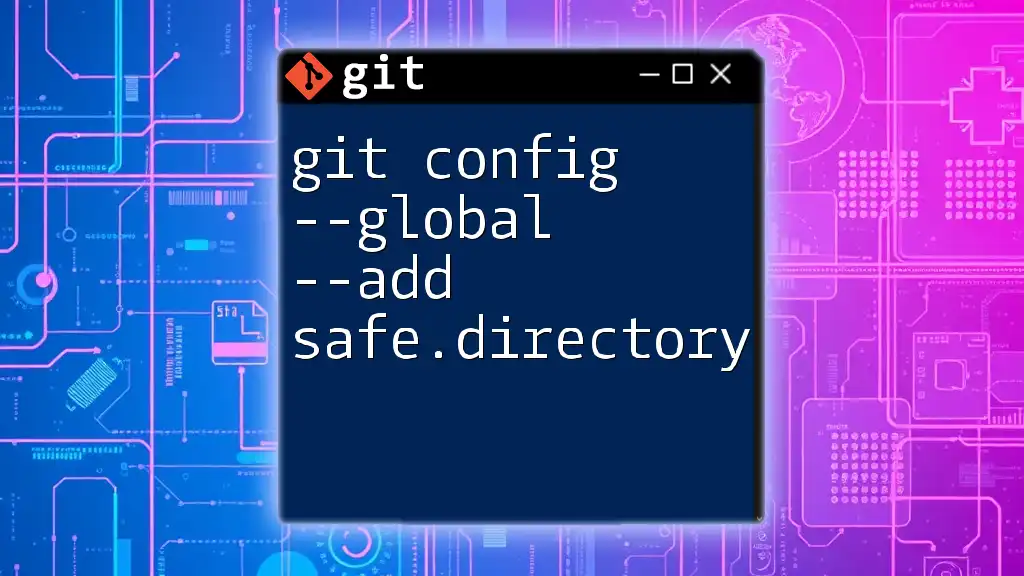
Common Configuration Settings
Essential Configurations Every Developer Should Set
To optimize your Git experience, here are some critical configurations that every developer should consider:
-
User Name and Email: Setting these is foundational. They are used to identify the author of commits and are crucial when collaborating with others.
-
Editor Preferences: By specifying your preferred text editor, you ensure that any prompts for message writing align with your comfort zone. For example, you can set Vim as your default editor with:
$ git config --global core.editor "vim"
- Color Settings: Enabling color in the Git command line can significantly enhance visibility and clarity. You can activate it like this:
$ git config --global color.ui auto
These configurations form the backbone of your Git setup, enabling a more productive workflow.

Troubleshooting Configuration Issues
Common Errors and Resolutions
While configuring Git, you may encounter various issues. Common errors include:
-
Misconfigured User Information: Incorrect commits due to mismatched user.name or user.email. Double-check your configurations using `git config -l` and correct them if necessary.
-
Editor Not Opening: If you have set your editor incorrectly, Git won't open it for commit messages. To troubleshoot, ensure the correct path to your editor is specified in your configuration.
If these problems arise, a simple reconfiguration or a check of the output from `git config -l` can often resolve them.

Best Practices for Git Configuration
Organizing Your Configuration
Keep your configurations organized to avoid clutter and confusion. Regularly review your settings to ensure they haven’t been inadvertently changed or become outdated. Consistency across projects promotes a better development experience.
Security Practices
Be mindful of security when managing your Git configurations. For example, use SSH keys instead of storing passwords directly in your configuration. This approach enhances the security of your repositories.
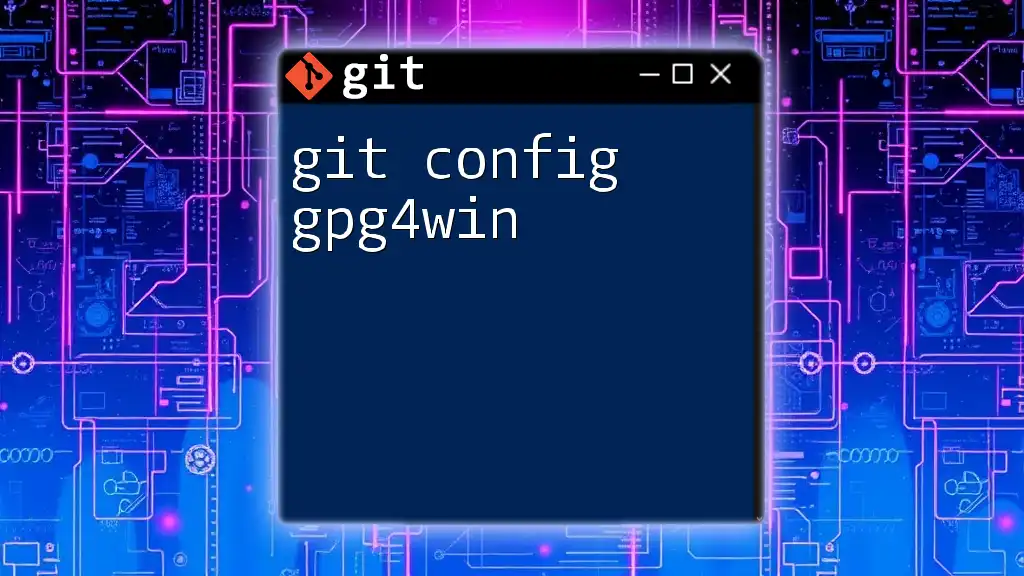
Conclusion
Summary of Key Points
The `git config -l` command is a powerful tool for managing your Git setup. It allows you to review your configurations quickly, which is critical for efficient and accurate version control. Remember to regularly check your settings and adjust them as necessary to maximize productivity.
Additional Resources
For further learning, consider checking the official Git documentation, which provides in-depth information on commands and configurations. Engaging with communities or forums dedicated to Git can also offer valuable insights and support as you enhance your skills.

